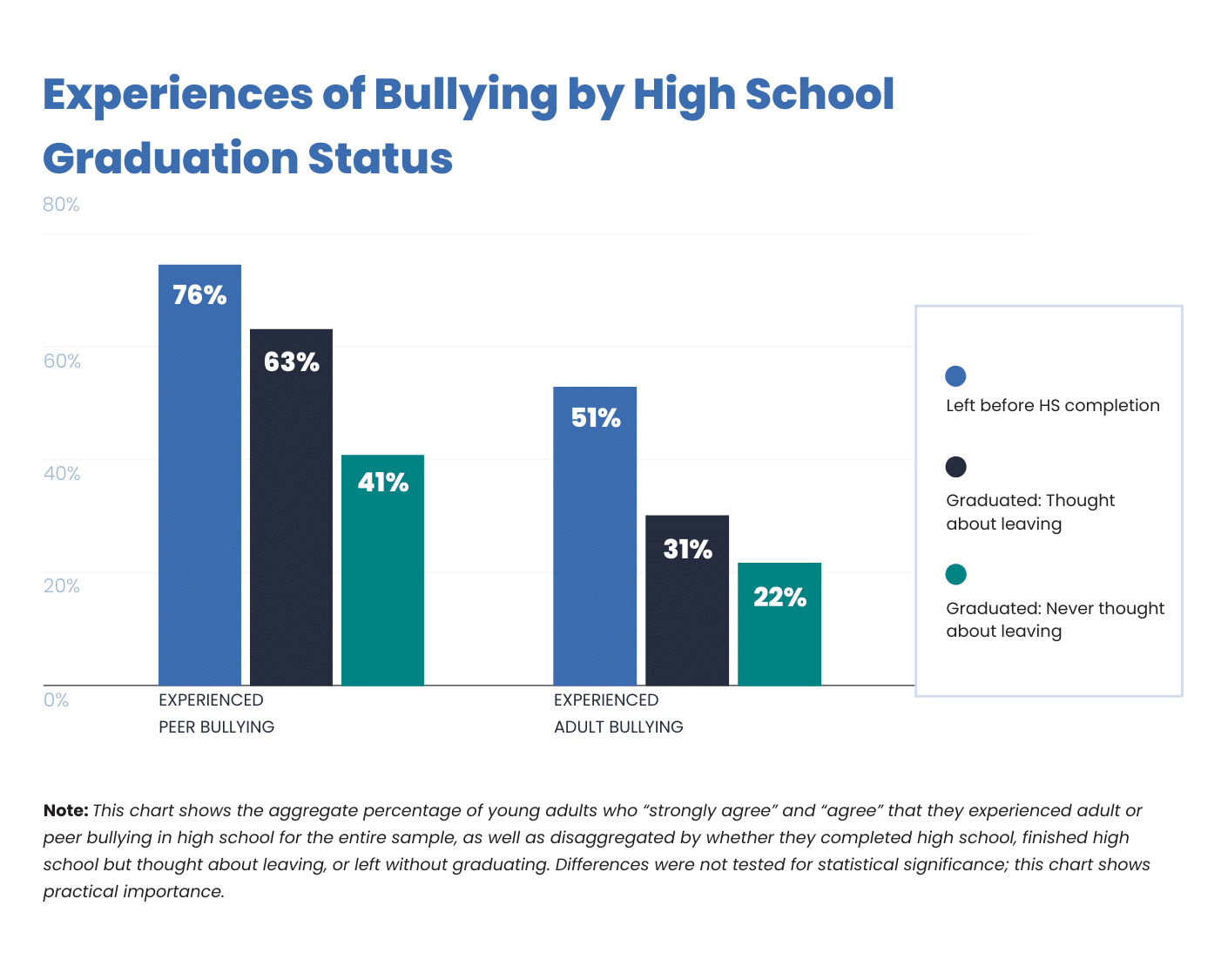The Power of Supportive Relationships for Students with LD
“Supportive relationships” refer to relationships students have with peers, teachers, and the broader school community that foster mutual feelings of belonging, respect, and value. Previous research shows that students with LD often experience unique challenges in school when it comes to relationships with peers and teachers, which puts them at greater risk for not finishing high school*. Students who feel they belong and are connected to their peers and school community tend to demonstrate stronger academic performance, enhanced well-being, and higher graduation rates.
Take a look inside the State of LD
Supportive relationships with peers and educators were a critical factor in helping students with LD graduate from high school*. While many young adults experienced support from at least one educator, they too often felt bullied or excluded by their peers and even their teachers because of their LD.
- 50% reported having experienced bullying from a peer because of their LD.
- 26% reported having experienced bullying from a teacher because of their LD.
- 24% felt unsure if their teachers wanted them in class or believed they were not wanted in class.
Key Takeaways
Strategies that promote supportive relationships are pivotal for driving high school persistence and completion for students with LD.
 Here’s what you can do to support individuals with LD
Here’s what you can do to support individuals with LD
Self-advocates
- Surround yourself with a supportive community: Make use of opportunities to connect with peers and teachers who understand, support, and value you, whether through clubs, extracurricular activities, mentorships, or daily interactions.
Families
- Build and foster a supportive community: Encourage your child to seek supportive peers that help them feel respected and valued. Create and seek out spaces that encourage these relationships to thrive.
Communities and practitioners
- Equip educators to cultivate supportive relationships: Equip educators with strategies to cultivate supportive relationships with and among their students. Normalize different learning and behavioral needs in the classroom and actively create a classroom environment that prioritizes building a strong sense of belonging for all students.
State and federal policymakers
- Prioritize funding that builds school and community capacity for supportive relationships: Ensure dedicated funding is put toward supporting school-based services and supports, including school-based mental health services, and community supports, including Parent Training and Information Centers.
- Prioritize policies that enhance educator preparation and professional development: Invest in federal or state programs and funding streams that strengthen the preparation of all educators to support students with diverse learning and behavioral needs effectively.
To learn more about NCLD’s research findings, explore our suite of reports: the Snapshot offers an overview of key findings for all audiences; the Report provides an in-depth review of the research for those seeking a deeper understanding; and the Technical Report delivers a comprehensive description of the survey design, methodology, and results for readers interested in research methodology.
*To learn more about the findings from previous research and to access citations, see the full report.This finding was obtained using structural equation modeling, where factors relating to supportive relationships with peers and educators were found to be significantly related to high school graduation status. Supportive relationships were operationalized and referred to as “social inclusion” in our report but here we use the term “supportive relationships” for plain language for broad interpretability. Read the full report to learn more.
